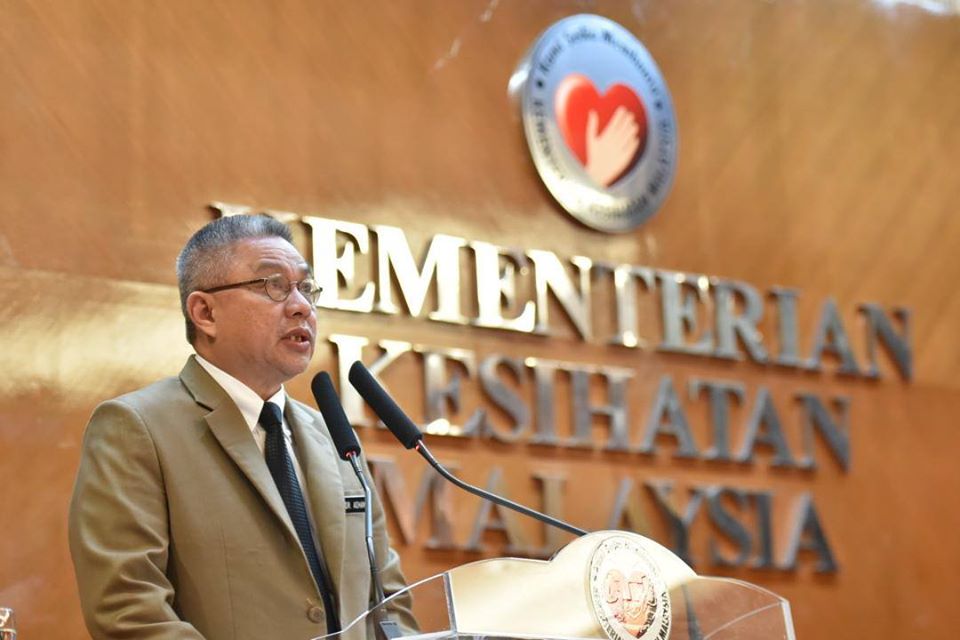KUALA LUMPUR, July 31 — The Ministry of Health (MOH) revealed the classification system it uses to monitor and manage a disease outbreak, but did not name the stage Malaysia is currently at for Covid-19.
Jerantut MP Ahmad Nazlan Idris (Umno) had asked in Parliament on MOH’s plans to develop its own system on infectious disease outbreaks, such as Singapore’s Disease Outbreak Response System Condition (DORSCON) that is currently marked “Orange”.
Health Minister Dr Adham Baba replied that Malaysia’s MOH uses a similar system, known as the Disease Outbreak Response Matrix Malaysia (DORMM).
“DORMM is used as a specific guide by MOH to plan the implementation of follow-up actions throughout an infectious outbreak. It is also a procedure filled with technical elements,” said Dr Adham in a written Parliament reply on July 28.
“So, the information cannot be shared with the public arbitrarily without providing a clear and thorough explanation,” he added, without specifying Malaysia’s current stage in the DORMM on the coronavirus outbreak.
The minister explained the number codes in Malaysia’s DORMM by describing the phase each number represents.
Number 1: Alert Phase
This is the phase when an infection occurs in other countries without any cases detected in Malaysia. Similarly, the disease depicts mild or severe symptoms, but has limited ability for transmission from one person to another.
In this phase, measures to strengthen the readiness level of the country to deal with the potential importation of the infection into Malaysia will be implemented.
Number 2: Early Containment Phase
This phase begins as soon as the infection is detected in Malaysia and needs to be addressed immediately to prevent it from spreading among the local community.
From the aspect of the nature of the disease, this phase involves infections transmitted from one individual to another abroad, but no sporadic cases or local transmissions are reported.
Number 3: Late Containment Phase
This phase will be activated when transmission of local infections has been reported in Malaysia. Symptoms of the infection detected are mild in most individuals, but can potentially be severe and cause complications among high-risk groups, such as children, pregnant women, and senior citizens.
However, local transmission of the infection in the community can still be curbed and controlled by utilising the medical and health capacity of the country.
Number 4: Mitigation Phase
During this phase, infections have spread widely in the local community. Thus, activities implemented during this phase aim to mitigate the impact of wide transmission of an infection.
Methods of treatment in this phase may also no longer be accessible from all walks of life, but based on a priority approach that will be developed according to evaluation of the current situation.
Singapore’s DORSCON
Under Singapore’s DORSCON that shows the current disease situation, four colours — green, yellow, orange and red — are used to declare the severity and spread of the disease, and the according general guidelines for each phase.
According to Singapore’s MOH website, the Covid-19 situation in the country is currently marked “orange”, which means that the disease is severe but has not spread widely in the country and is being contained, while the impact on daily life is “moderate disruption”, like quarantine and temperature screening.
Singapore’s MOH website also lists active Covid-19 cases at 5,406 as of July 29, with 46,098 discharged, and 27 deaths, totalling 51,531 overall cases. Singapore has been reporting daily new cases in the hundreds since the past week. Malaysia has reported 223 active cases, 8,617 recoveries, and 124 deaths, totalling 8,964 overall cases. MOH’s daily press statements on the Covid-19 outbreak are listed on Health director-general Dr Noor Hisham Abdullah’s personal website.
Singapore’s health authority also releases testing information, saying that 1,321,094 total swabs have been tested and 616,310 unique people swabbed as at July 27, leading to about 108,100 unique people swabbed per million population. MOH said 963,079 individuals have been sampled as of July 30; this means about 30,096 individuals are swabbed per million population, about 3.6 times fewer than Singapore.
The World Health Organizaton’s (WHO) pandemic alert level consists of six phases, including the identification and verification of a disease or virus transmission among animals or humans, preparedness, capacity development and response planning activities during a pandemic, and post-pandemic measures.








